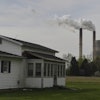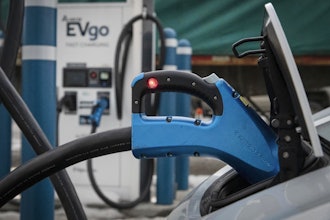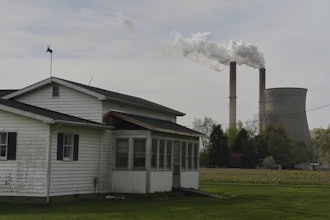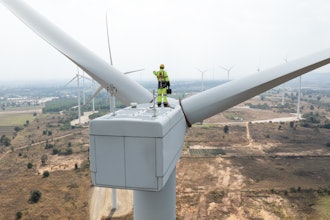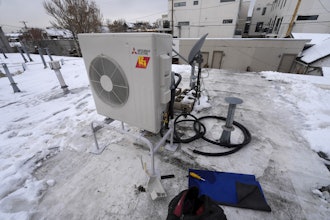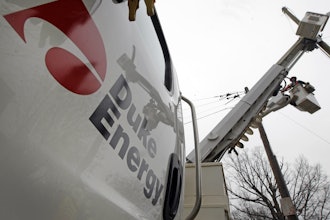
SAN FRANCISCO (AP) — The nation's largest utility said Tuesday it is executing smarter and shorter power shutoffs after receiving widespread criticism last year when it turned off electricity to 2 million people to prevent its equipment from sparking wildfires.
The targeted outages that began overnight to about 167,000 homes and businesses in central and Northern California are the first by Pacific Gas & Electric since critics blasted last year's shut-offs as poorly executed and overly broad.
The outages come as thousands of firefighters battle wildfires burning for weeks at the same time many of the state's 40 million residents stay at home because of the coronavirus pandemic. PG&E said winds overnight Monday gusted to 66 mph in some areas.
The business and household customers without power Tuesday were in areas including the Sacramento Valley, Sierra Nevada foothills and parts of Napa and Sonoma counties in wine country. PG&E started shutting off power Monday night, saying that dry, hot, windy weather forecast until Wednesday posed a significant fire risk.
Some customers already were having their power restored Tuesday as weather conditions improved, said PG&E senior director Mark Quinlan told an evening briefing. The utility was able to maintain power to about 70,000 customers in Humboldt County thanks to a high—power generator, and temporary generators throughout Northern California allowed the utility to maintain power to hospitals and other emergency facilities, he said.
Quinlan said PG&E is so far hitting its target of reducing the outages by a third compared with last year, thanks to better weather forecasting and the installation of about 200 “sectionalizing devices" that allow experts to divide power lines more surgically.
Still, power likely won't be restored to most customers until Wednesday evening as the utility marshaled 60 helicopters and one plane to speed up required inspections before the utility can turn lines back on. Its website detailing the locations of power shutoffs appeared to be working Tuesday, unlike last year when it crashed repeatedly.
The utility has learned to make the planned shutoffs, “smarter, shorter and smaller," than last year's blackouts, company spokesman Jeff Smith said. He said the utility is targeting outages more narrowly and plans to have power restored within 12 daylight hours of severe weather ending.
To the south, Southern California Edison warned roughly 55,000 customer accounts may lose power while San Diego Gas & Electric said 16,700 customers are at risk of a preemptive outage.
Robert Villegas, spokesman for Southern California Edison, said they are tracking a wind event that may begin late Tuesday, affecting roughly 11,000 households and businesses in Los Angeles County and 15,000 in San Bernardino County.
A series of preemptive outages last fall by the three utilities affected millions of people, some for days at a time.
Gov. Gavin Newsom and Marybel Batjer, president of the state Public Utilities Commission, excoriated PG&E and the other for-profit companies for the chaos and poor communication. Local emergency officials said they did not get timely information to relay to residents. The commission is continuing a nine-month investigation into the bungled blackouts.
PG&E promised to improve its performance this year while largely defending its decisions last year. It has warned Californians to expect preemptive power shutoffs for the long-term as the state grapples with hot and windy weather that is ideal for sparking wildfires triggered by failing equipment.
PG&E's aging equipment has previously sparked some of the state's largest wildfires, including the deadly 2018 fire that destroyed much of the town of Paradise and killed 85. The utility pleaded guilty in June to 84 felony counts of involuntary manslaughter; one death was ruled a suicide. The utility paid $25.5 billion in settlements to cover the losses from power line-sparked catastrophes.
Kristen Broderick, an esthetician who specializes in eyelash extensions, was prepared to work a 10-hour day at Studio 3 Salon in Sonora in Tuolumne County. But the salon lost power, as did her home. She has two children under 5 to care for in the heat and smoke.
“We were definitely more prepared this time, less panicked I suppose, but it wasn’t this hot last time," she said. The coronavirus pandemic, fires and power outages are wearying, she said.
“I feel like we’re in a constant state of paranoia, we never know what’s going to happen next. It's a hard way to function," Broderick said.
This time, the potential for blackouts to wreak havoc is higher as millions of people work and attend classes from home during the pandemic. There is concern that if mishandled, the outages could also endanger the lives of people being supported by medical devices after contracting COVID-19.
“A shut off or a fire shouldn’t be customers’ only choices," said Mindy Spatt, a spokeswoman with consumer group The Utility Reform Network, which has long advocated for utility reforms.
“With more and more of life’s essentials including school, work and healthcare only available online, we urgently need a utility company that can provide safe power that we can depend on. PG&E doesn’t appear to be able to do that," she said.



